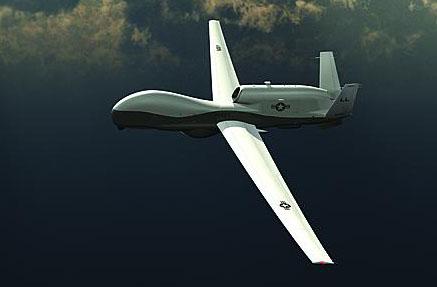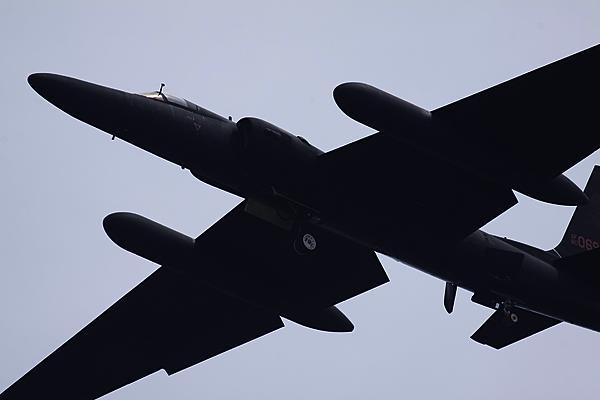Intelligence Leaders Seek Common Interests With China
The U.S. Pacific Command intelligence community is fostering an increased dialogue between China and other nations with interests in the Pacific Rim. The expanded effort is designed to build trust, avoid misunderstandings and improve cooperation in areas where China’s national interests converge with the national interests of the United States and others.
Chinese officials may join—for the first time—a 2014 conference involving intelligence chiefs from about 30 other countries with interests in the region. Rear Adm. Will Metts, USN, the new U.S. Pacific Command (PACOM) director of intelligence, reveals that while officials from the People’s Republic of China (PRC) were permitted to observe the Asia Pacific Intelligence Chiefs Conference (APICC) this year, they may be full participants at the spring conference in Bangladesh. “Humanitarian assistance and disaster relief, maritime security and cybersecurity are all key items of interest, and through that direct participation, it allows us a forum to be able to exchange and share ideas on how we might be able to address these challenges,” Adm. Metts states, referring to APICC as a capstone event.
The APICC is an annual event organized by the office of the PACOM intelligence director and the host nation. It involves directors of military intelligence from about 30 nations, including Indo-Asian-Pacific nations, along with countries with ties to the region, such as Canada, the United Kingdom, France, Russia, Pakistan and Chile. “With the complexity of the region and the global security environment, and the advances in China’s military capabilities—including expanding military operations and missions—it remains an imperative that U.S. Pacific Command maintain a peaceful and meaningful dialogue between the armed forces of the United States and China, including intelligence leader dialogue. That’s a very important part of our mission here,” Adm. Metts says.
China’s presence at the conference is not yet a done deal. Adm. Metts says he is hopeful for PRC participation, but plans will likely not be finalized until late this year or early next.
August was Adm. Metts’ first month on the job, and during that time, he had his first opportunity to engage with Chinese officials. When Chinese Minister of National Defense Gen. Chang Wanquan, PLA, visited the United States, his first stop was at PACOM, where he met with Adm. Samuel Locklear, USN, PACOM commander. Gen. Chang and Adm. Locklear discussed a range of developments in the U.S.-China military relationship, including humanitarian assistance, military medicine and multilateral collaboration and cooperation in regional security and stability. “As you might imagine, this dialogue emphasized practical cooperation where our national interests converge, and they discussed candidly those areas where we have disagreement,” Adm. Metts says. The Chinese general later met with Defense Secretary Chuck Hagel at the Pentagon, where the two agreed to take steps to improve military-to-military operations.
Because the Pacific Command is broad, diverse and complex, Adm. Metts emphasizes the need to develop and maintain strong relationships. One of his priorities in the coming months is leveraging the intelligence capabilities across the region. “We are developing an intelligence federation construct that encompasses the combined capabilities of all our partners and allies, our service components and our Joint Intelligence Operations Center,” he reports. “You might describe [the intelligence federation] as the closest thing to command and control of a broad array of intelligence capability parallel with what you would see in traditional war fighting.”
The federation is a way to address the wide array of potential threats in the region. “When you have a combatant command that’s responsible for more than 52 percent of the Earth’s surface, it takes a village to be able to do the mission that we’re responsible for here at U.S. Pacific Command,” he adds. “We have key treaty alliances with Japan, the Republic of Korea, Australia, the Philippines, Thailand and other key partners. Our key priority remains the integration of allies and partners in a comprehensive intelligence architecture that best supports regional stability enabled through shared knowledge.”
Creation of the intelligence federation is going well so far, he reports. “It is a combination of business practice adjustments. It includes a degree of optimization across our intelligence partners in the region. The objective of being able to work through policy and technical procedures to enhance information sharing with our partners and allies is a unique and interesting opportunity,” he says.
Challenges to sharing information are largely cultural. “The fact that nations [in the region] feel more comfortable in bilateral relationships and least comfortable in multilateral relationships is the most significant challenge,” he reports, adding that the United States enjoys strong and deep bilateral relationships. “But if you think about the direction that our missions are moving in this area of responsibility, the need to move to trilateral information sharing is critical. Addressing the technical, the policy, the procedural means of moving from bilateral to trilateral is not a trivial activity.”
Another priority is assisting in managing the rebalance of intelligence assets to the Asia-Pacific region as part of the U.S. strategic shift. “Our objective is to deliver strategically focused, operationally relevant and predictive intelligence that will ultimately drive U.S. Pacific Command operations and plans,” Adm. Metts explains.
The United States is shifting a myriad of intelligence, surveillance and reconnaissance (ISR) assets to the region. Many of those assets are being delivered from the U.S. Central Command now that they are no longer needed in Iraq and Afghanistan. Ashton Carter, U.S. deputy secretary of defense, said earlier this year that EP-3 signals reconnaissance aircraft, Navy P-3 maritime patrol aircraft, Global Hawks equipped with the Broad-Area Maritime Surveillance sensor and the EA-18G carrier-based, next-generation jammer aircraft are all being delivered to the Asia-Pacific region. In October, U.S. and Japanese officials announced an agreement that will allow the United States to begin deploying Global Hawks next year from an undisclosed base in Japan. The agreement is the first allowing the United States to secure basing rights for the unmanned aircraft in Northeast Asia. Additionally, the region in the future will receive littoral combat ships, which can carry a small arsenal of ISR systems depending on the ship’s mission package.
“We have had the opportunity to operate with long-dwell, high-altitude surveillance platforms over the last year or so, and thus far, that transition is going reasonably well. But we look forward to those additional capabilities that are necessary to meet some of the emerging mission requirements that we have in this theater,” Adm. Metts states.
Some specific examples of emerging missions include maritime security, humanitarian assistance, disaster relief and the ability to warn of unstable conditions on the Korean Peninsula, East China Sea and South China Sea. “I would say that those are all areas of focus that are necessary, that require significant support from the intelligence community,” he adds.
Adm. Metts declines to discuss specific systems or intelligence shortfalls, but he emphasizes that ISR assets are critical. “The need for intelligence, surveillance and reconnaissance capability is a continuous pursuit. I would just say that given the potential for uncertainty in this region, there is a continuous need for ISR capabilities. I’ll just leave it at that,” he says.
That complexity requires a broad range of assets. “We need the full spectrum of platforms and sensors that provide flexibility, persistence and quite frankly, the ability to conduct deep, penetrating intelligence, surveillance and reconnaissance in order to generate the knowledge that our operational commanders need to conduct their missions in this theater,” he says. “Needless to say there is never a simple day here at U.S. Pacific Command.”






Comments